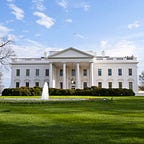The Paris Agreement: What You Need to Know
Today, the Paris Agreement officially entered into force, years sooner than most experts had predicted.
Here’s what that means — and why it matters to the future of you and your family:
First things first: What’s the Paris Agreement?
Last December, with the help of President Obama’s leadership, more than 195 countries came together around a long-term, global framework to enable countries to ratchet down their carbon emissions over time, with all countries putting forward increasingly ambitious targets every five years. With strong transparency and reporting requirements, the agreement will help make sure that countries follow through on the goals they’ve set.
In short, the Paris Agreement sets the foundation for global cooperation that will put the world on a path to keeping global temperature rise well below 2 degrees Celsius. That’s a big — and historic — deal.
I’m not a climate policy wonk. What does it mean to “formally join” the Agreement?
After signing the agreement, countries must formally join the agreement by completing the domestic legal procedures that are required to join an international agreement.
Wait, didn’t the United States and China already join this agreement?
Yes. In September of this year, both the United States and China formally joined the Paris Agreement — and although it wasn’t the only step required for entry into force, it was a significant accomplishment. Here’s why:
A lot of people assumed that the Paris Agreement wasn’t even possible. And even after it was signed last year, most experts predicted that the agreement wouldn’t enter into force until 2020. But one of the things that this cynical view missed was the quiet and deliberate diplomacy that took place over the course of three years by two world leaders: President Obama and President Xi of China.
Their ability to work together has been vital to the success of this effort to combat climate change on a global scale. As the world’s two largest polluters, the United States and China account for 40% of global emissions. So over the past three years, climate change efforts have become a pillar of the U.S.-China bilateral relationship, culminating in our joint commitment to the Paris Agreement last December.
When China and the United States joined, it sent a powerful signal to the rest of the world. The United States and China acting together on climate gave confidence to countries around the world that, for a problem as big as this, we all must accelerate our progress and be part of the solution.
When did the Paris Agreement “enter into force”?
The Agreement includes a clause that says it would “enter into force” one month after 55 countries representing 55 percent of global emissions formally join the agreement.
When the U.S. and China formally joined the agreement, President Obama’s goal of implementing the agreement this year was suddenly well within reach — well ahead the predictions of many experts.
What happens now that the agreement has “entered into force”?
Now that the agreement has entered into force, countries can turn to the critical work of implementation. This means making good on the domestic commitments that countries put forward as part of the Paris Agreement to reduce their emissions, collaborating with other countries on long-term plans to reduce emissions and setting the next round of climate targets for 2030, and working to implement a reporting and review system for the Paris Agreement that is transparent, uniform and independently verifiable.
